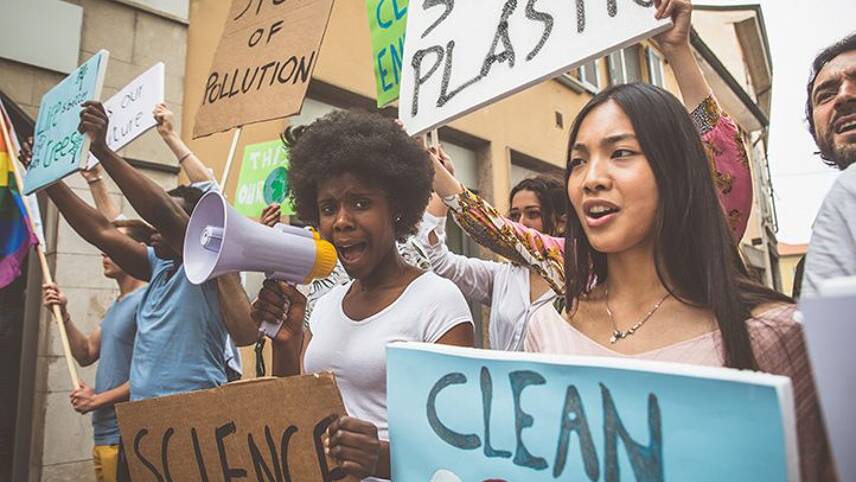Register for free and continue reading
Join our growing army of changemakers and get unlimited access to our premium content

We can’t tackle the climate crisis successfully and sustainably without tackling inequalities. Climate action must go hand-in-hand with efforts to promote gender equality and protect women’s health and rights.
Climate change deepens inequities and women and girls are bearing the brunt. Efforts to date to shore up resilience to climate change have simply not been sufficient, and have failed to apply a gender lens that addresses its outsized impact on women and girls and marginalized groups.
Few countries have invested in universal sexual and reproductive health and rights as part of comprehensive climate adaptation efforts. Yet, we know that the expansion of health services advances gender equality by empowering women and girls to take control of their bodies and lives, strengthening their ability to adapt to and weather the impacts of climate change.
Women and girls are also essential to climate solutions. All around the world they are leading responses to climate-related disasters and building community resilience. They often take on the burden of securing water, food and fuel for cooking and heating for their families – this makes them uniquely placed to help communities find ways to adapt to changing environmental conditions.
What are some of the ways in which women and girls are disproportionately impacted by climate change?
Climate change is not gender neutral. It multiplies existing vulnerabilities, many linked to poverty. Those with the fewest resources are the ones hardest hit by extreme weather patterns, which can limit access to food, water, and shelter, as well as curtail access to education and health care, including maternal care. These impacts can be devastating, especially for marginalized groups and women and girls, who make up the majority of the global poor and who are largely dependent on natural resources for their livelihoods.
Climate-driven poverty, food insecurity, and air pollution are all negatively affecting maternal and newborn health outcomes, with an increased risk of premature deliveries, stillbirths and low birth weight. For displaced women and girls in humanitarian settings, the lack of access to sexual and reproductive health services is one of the leading causes of death.
The aftermath of disasters also brings increased protection risks for women and girls. Cyclones in the Asia-Pacific region precipitated spikes in gender-based violence, while tropical storms in Latin America left girls vulnerable to sexual exploitation and abuse. Families suffering financial hardship and unable to feed their children are more likely to pull their daughters out of school and offer them into marriage. Extended drought in East Africa jeopardized livelihoods and eroded social support structures, increasing the risk of harmful practices such as child marriage.
What are the consequences?
Climate change is a major threat to the vision of people-centred development at the heart of the Sustainable Development Goals and the International Conference on Population and Development’s Programme of Action. Without equal rights and the ability to exercise decision-making over their own bodies, women and girls are simply not on an equal footing when it comes to navigating the devastating consequences of climate change. And the result is that some of the most vulnerable and marginalised women and girls are being left even further behind.
What action needs to be taken?
UNFPA is working with governments and other partners to support adaptation responses to climate change by empowering women and girls to protect their rights, make choices and realize their potential. This in turn strengthens the resilience and ability of communities to adapt and recover from climate change impacts.
With humanitarian needs expected to double by 2030, UNFPA continues to support efforts that put in place systems that guarantee the continuity of sexual and reproductive health and protection services when disaster strikes – including essential and lifesaving maternal health care and voluntary family planning. And we are strengthening data systems that show the multiple and differentiated impacts of the climate crisis on women and girls to drive effective and gender-responsive climate action that is more targeted.
What does UNFPA hope to see out of COP26?
Our goal at COP26 – together with our partners – is to underscore that current levels of climate adaptation finance directed towards meeting the needs of women and girls impacted by climate change are insufficient. Adaptation finance is essential to ensure that health, protection and education systems are ready for the challenges posed by climate change.
Advancing women and girls’ adaptation and resilience to the adverse impacts of climate change through political and financial support for sexual and reproductive health and rights services, voluntary family planning, and education will build the resilience of individuals, families and communities to respond and adapt to the crisis, and ensure gender and climate justice.
There needs to be more ambition – with stakeholders delivering adaptation actions that are gender-sensitive and protect the rights of the most vulnerable.
As UNFPA we stand ready to support governments in prioritizing the health, rights and safety of everyone, everywhere as the pathway to a greener planet and a brighter future for all.



Please login or Register to leave a comment.